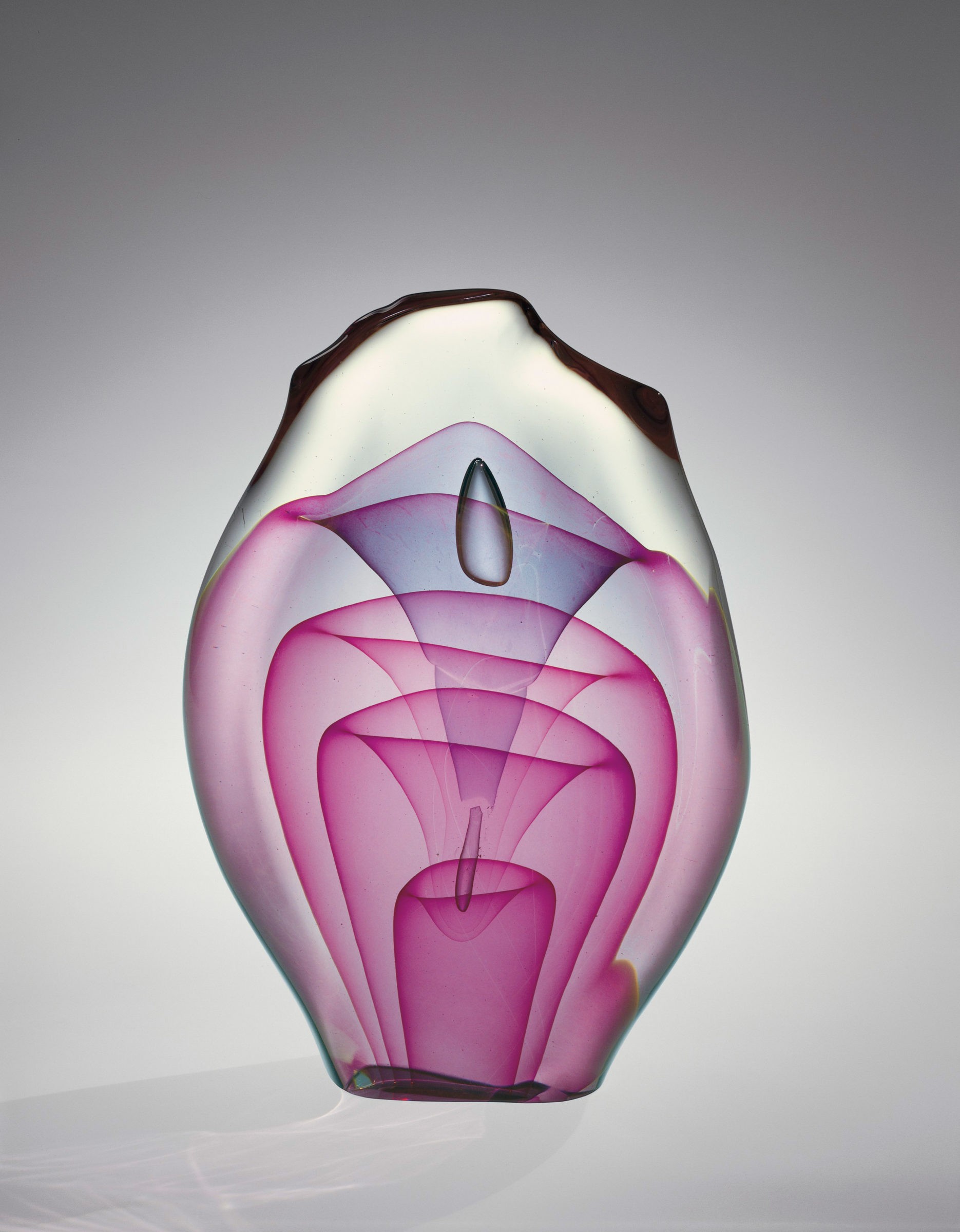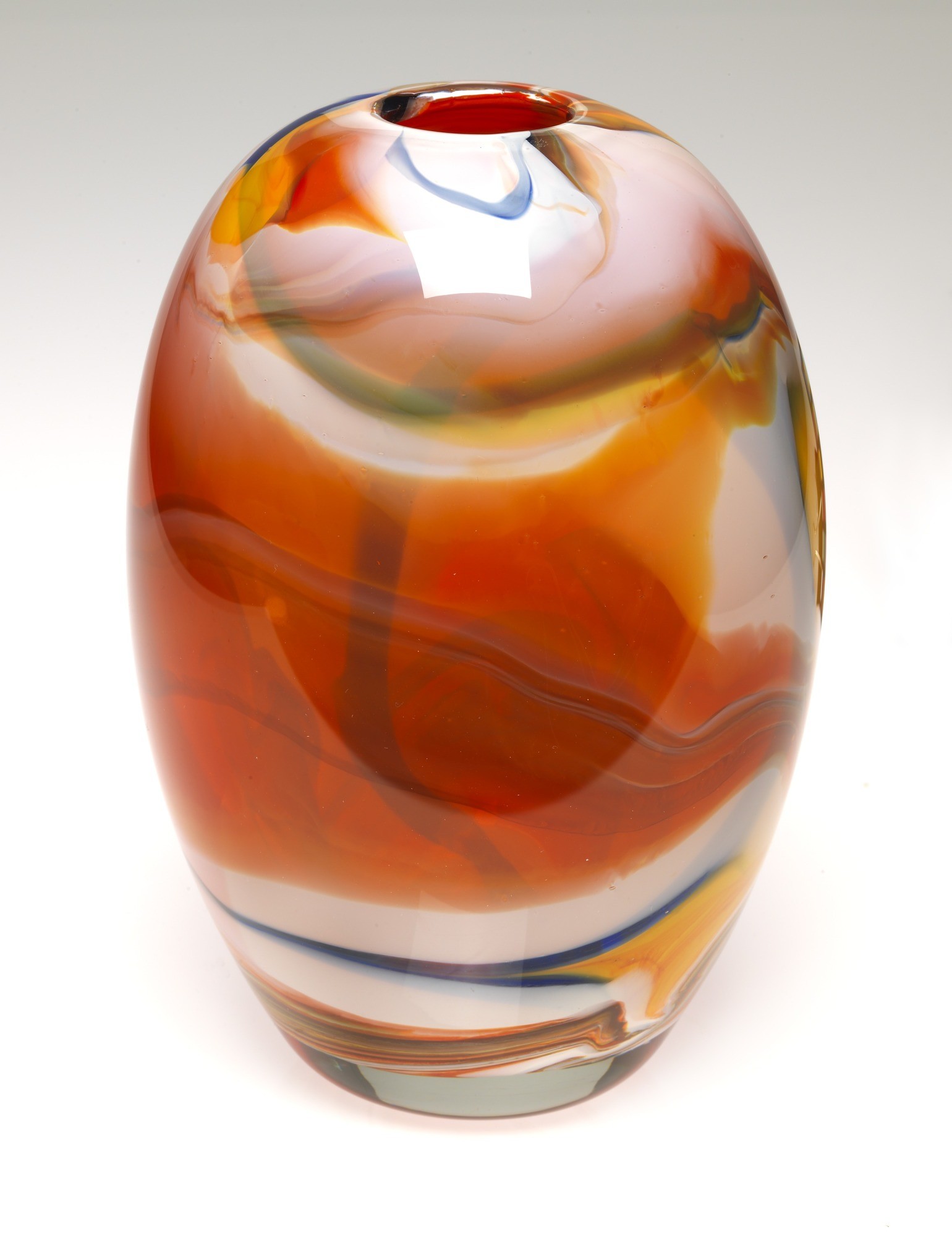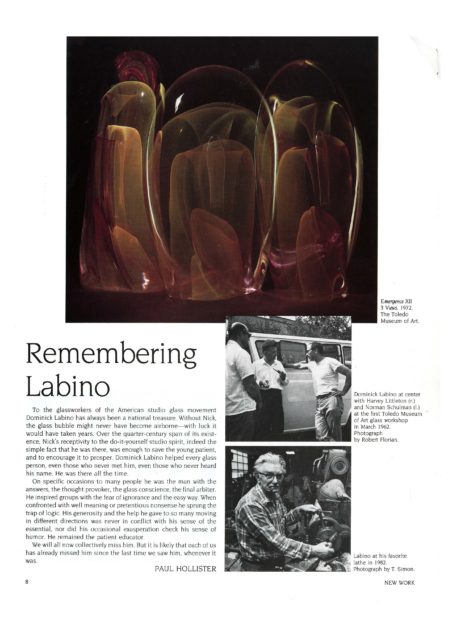Dominick Labino
American inventor and artist Dominick Labino (1910–1987) studied engineering at the Carnegie Institute of Technology (later Carnegie Mellon University), graduating in 1932. He spent most of his early professional career in the glass industry, developing glass formulas and designing furnaces; his name is tied to over sixty patents in the United States alone. Labino’s participation proved vital to the success of the 1962 workshops that Harvey Littleton organized at the Toledo Museum of Art—heralded by many as the beginning of the studio glass movement. At the workshops, Labino’s knowledge and the glass materials he provided made it possible to melt and work hot glass in a small studio setting, outside of a factory. Labino retired from industry the following year and set up his own glass studio in Grand Rapids, Ohio, where he worked until his death.
Works

Untitled, 1969. Glass. H: 4 in, W: 2.5 in, D: 2 in. Collection of the Smithsonian American Art Museum, Gift of Lloyd E. Herman, founding director and director emeritus of the Renwick Gallery (1971-1986), in memory of Paul Vickers Gardner, Curator Emeritus, National Museum of American History, Division of Ceramics and Glass, Smithsonian Institution (1994.101).

Emergence Four-Stage, 1975. Overall H: 22.3 cm, W: 15.8 cm, D: 6.16 cm. Collection of The Corning Museum of Glass, Corning, New York. Purchased with the aid of funds from the National Endowment for the Arts (76.4.21).

Polychroma, 1983. Glass. H: 7 in, W: 4.75 in, D: 4.75 in. Collection of the Smithsonian American Art Museum, Gift of Elmerina and Paul Parkman (2002.73.12).
Bibliography

“Remembering Labino.” New Work 29 (Spring 1987): 8.